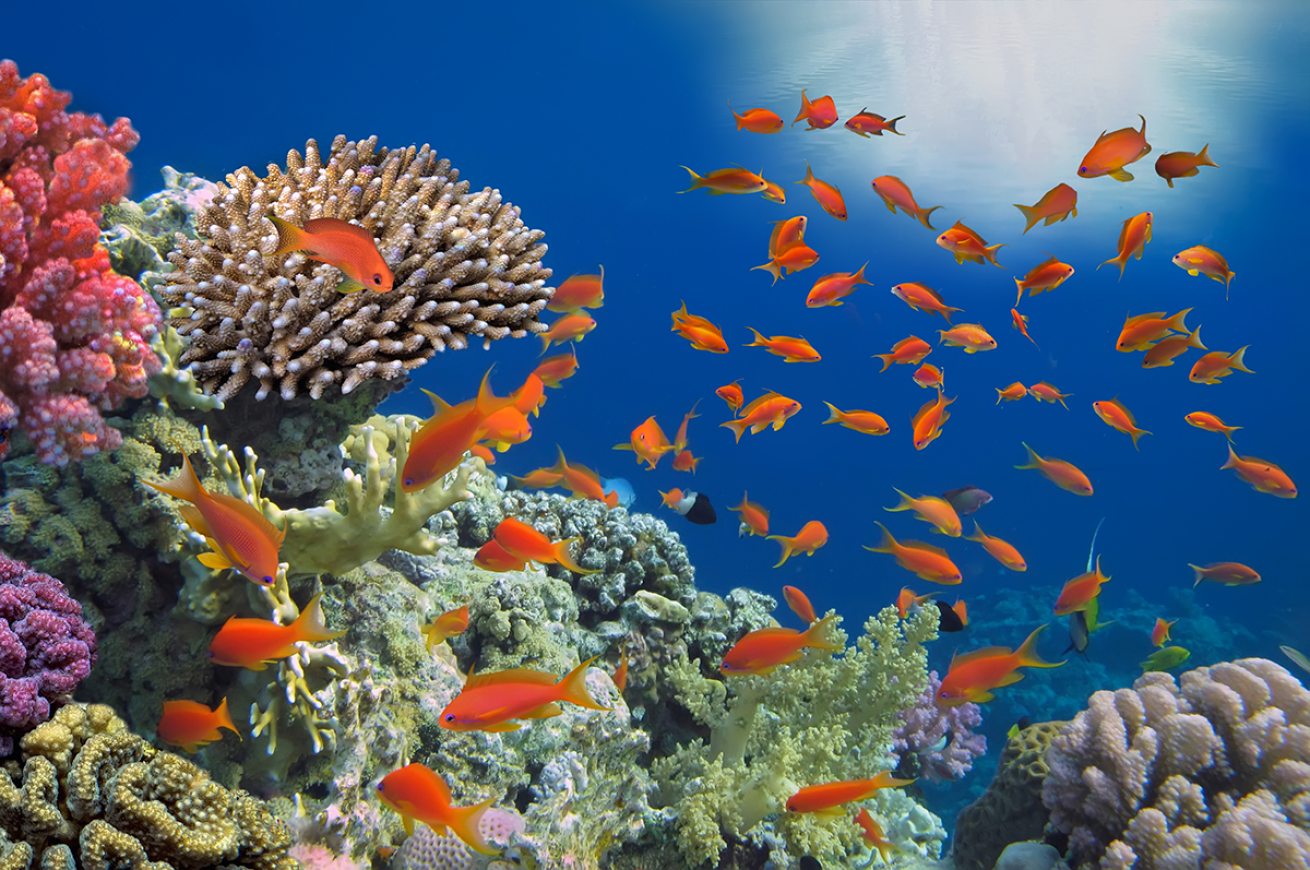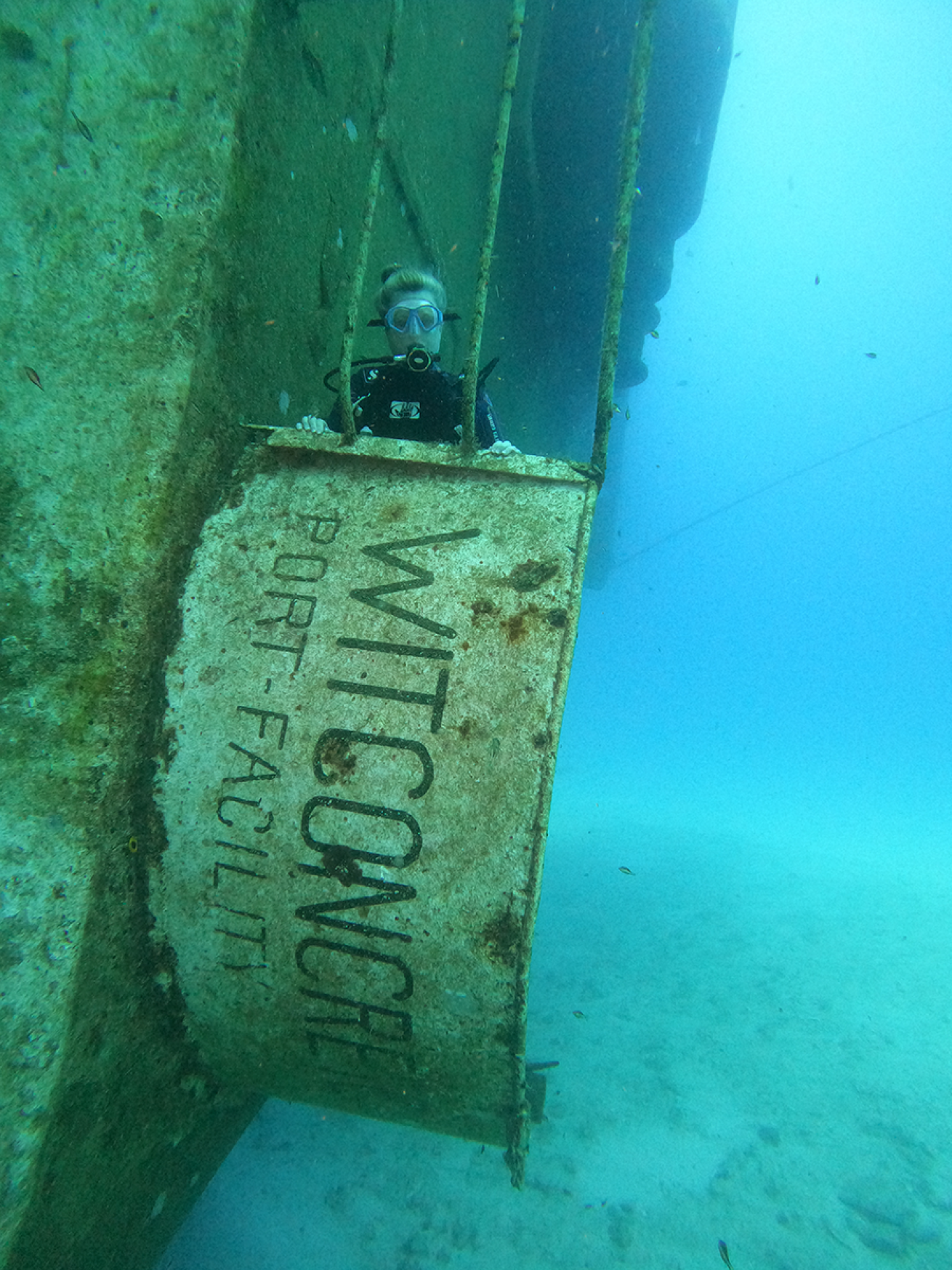How to Throw a Birthday Party for a Coral Reef

Shutterstock.com/Vlad61Belize is home to the world’s second-largest barrier reef.
When the Belize Tourism Board asked if I’d fly out to celebrate the 10,000th birthday anniversary of the world’s second-largest barrier reef with them, I jumped on the opportunity.
After all, who could turn down exclusive access to hear from individuals at the forefront of ocean conservation and policy? Not to mention an opportunity to be in one of the most beautiful destinations in the Caribbean—warm turquoise water, fresh mangos and a breeze that keeps the temperature just right.
No matter how many times I visit this country, I still enjoy every aspect of it—from hours-long lunches to the puddle jumper planes that transit between Belize's mainland and its many islands.
This time, instead of just scuba diving, I’d be learning more about how Belize’s various government entities work with local authorities on programs aimed at helping the reef survive for another 10,000 years.
Tip One for Conserving Reefs: Manage Invasive Species
My first conversation happens at a small, local restaurant. This is where I am introduced to Warren Garbutt, who heads the Village Council in Placencia—a locale just south of Belize City known for its superb diving. Garbutt talks about how they manage both sargassum and lionfish.
Beautiful as sargassum might look to the casual observer, this dense seaweed mats across the surface, blocking sunlight from reaching the reefs below. Under Garbutt’s direction, the community monitors sargassum, organizes clean-up efforts to remove it, and finds ways to use the sargassum like mixing it with cement for building projects in addition to researching ways of incorporating it into skincare products for retail sales.
Any seasoned diver also knows the accidentally introduced lionfish are another invasive species that play havoc on Caribbean reefs. These fish are native to the Pacific and have no known natural marine predators in these waters. I am fascinated to learn that lionfish multiply faster than average reef fish and have a big appetite for juvenile reef fish—a real problem if you’re trying to keep a reef alive.
Later, when I dive off Turneffe Reef I see a fascinating interaction. An eel stalking a lionfish. While the eel doesn’t end up catching the lionfish, the experience makes me wonder if, in time, the local marine life will end up learning to eat lionfish.
To help control population growth, a group out of Placencia, better known as the Lionfish Working Group, hosts Lionfish shootouts. This gives both locals and visitors an opportunity to partake in data collection and conservation management. The lionfish that are collected as a result of these hunts provide local artists with quills from which jewelry can be made, and with plenty of fish to eat.
Tip Two for Conserving Reefs: Protect the Marine Reserves
The following day I fly back to the city where I then transfer to Turneffe Atoll, Belize’s largest marine reserve at 30 miles long, 10 miles wide and spanning 200,000 acres of reef. Here I meet the Turneffe Atoll Sustainability Association (TASA), headed by Valdemar Andade.
This time I am not alone and representatives from other nonprofit organizations join us for a tour of the various ranger stations where vessels are kept, and where scientists conduct research on coral health, restoration and monitoring of mangrove forests.
Some of these ranger stations are also open to the public and have facilities to encourage picnics, overnight stays and more. I find myself thinking how clever it is to give anyone interested an opportunity to either work alongside the scientists conserving the reef or just to see what they get up to.

Courtesy ImageDingel dives the Witconcrete, a purpose-sunk wreck off of Calabash Caye.
In an effort to further expand the reef, in 2021, TASA collaborated with Blackbird Caye Resort and purposely sank a ship known as the Witconcrete just a splash away from Calabash Caye. The 375-foot retired molasses container shipwreck landed on its side and is shallow enough for snorkelers and up to 95 feet deep for divers.
Luckily, I get to dive the wreck and it’s a dive to remember with mesmerizing light pouring through the portholes as though I’m in a cenote. Not only does it have a resident school of parrotfish, it is crawling with arrow crabs and I see my first mid-dive manatee! Both my guide and I are stunned when we see it, squealing and high-fiving in the water. Later my guide tells me that although he has done over 200 dives on this wreck, this is also the first time he has seen a manatee on it.
Tip Three for Conserving Reefs: Don’t Go It Alone
When I return to land, I meet with Dr. Rachel Graham, Founder and Executive Director of Mar Alliance. She explains how her team works locally in Belize to implement multiple conservation programs that protect the reef and especially its larger inhabitants with gill net bans, long-term monitoring of finned fish, and seasonal fish counts.
I am relieved to learn that out here the pandemic had some positive effects, with COVID helping to put a stop to trans boundary fishing alongside Mar Alliance’s own efforts. As a result, the number of sharks now seen on Lighthouse Reef has increased.
Finally, I meet Janelle Chanona, Vice President of Oceana, an organization I have long admired. Now Oceana has helped implement a moratorium on offshore oil drilling in Belize, their focus is on conservation and sustainability education within the local community. Programs like the Fish Right / Eat Right (FRER) program are taught and already in use, allowing consumers to follow their piece of fish from the local waters right to their dinner plate. It’s a journey I am eager to see for myself and to follow into the future.
So, How Do You Join the Celebration?
The best time to visit Belize’s barrier reef and all its wonder is year-round.
Get involved by contacting the Belize Tourism Board, Tropic Air, Itz’ana Belize Resort, Placencia Village Council, TASA, Ramon’s Village Dive Resort, MarAlliance Belize, and Oceana Belize. They will guide you to diving and exploring the best the country has to offer and you may just end up doing some good while you’re at it.










